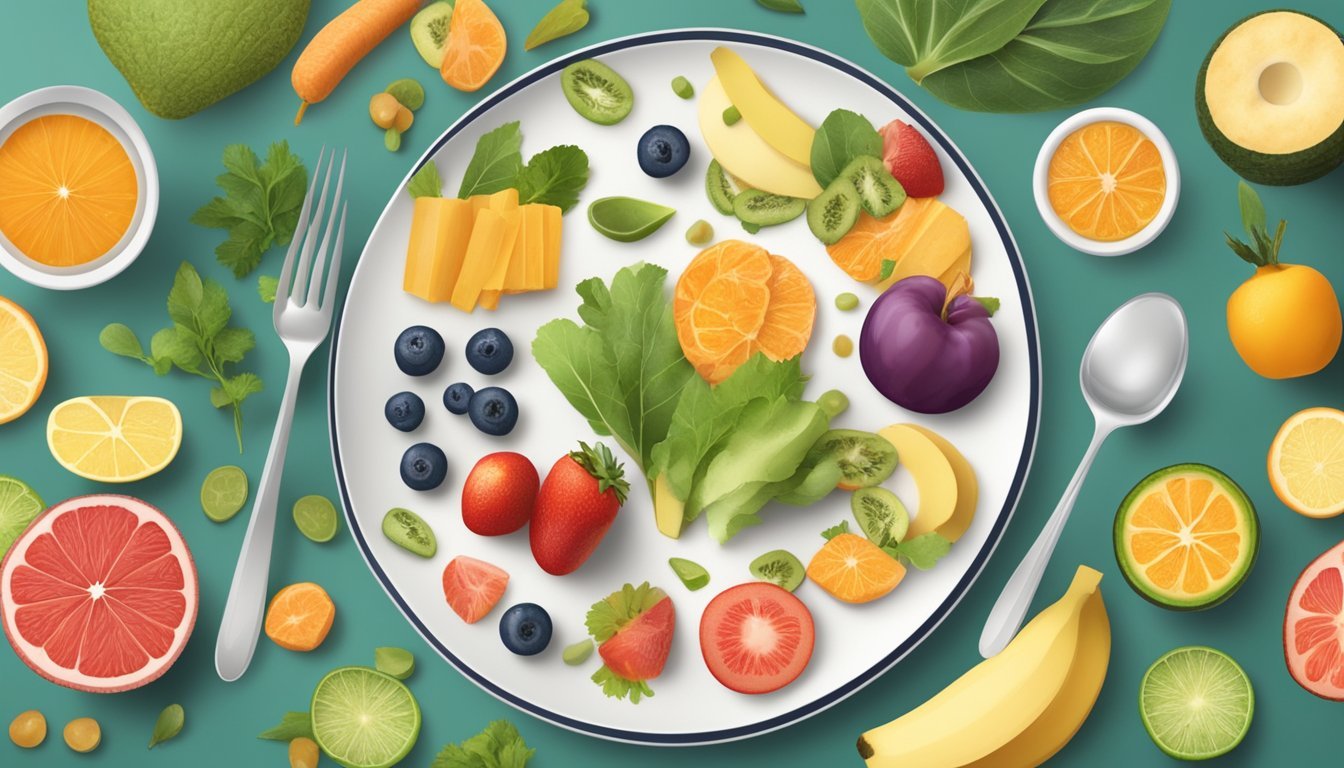Can Diabetics Eat Voavanga? Understanding Nutritional Benefits and Risks
Voavanga, often known as Spanish Tamarind, is an intriguing fruit that has piqued the interest of many, especially those managing diabetes. With its unique flavor and nutritional profile, many wonder if it can fit into a diabetic-friendly diet. Yes, diabetics can eat Voavanga, but it is crucial to consider portion sizes and overall dietary balance.
Rich in fiber and essential vitamins, Voavanga can help in maintaining stable blood sugar levels, which is vital for diabetics. The fiber content aids in slowing down the absorption of sugar, preventing spikes in blood sugar levels. Including Voavanga in a balanced diet, complemented by other non-starchy vegetables, proteins, and whole grains, can be beneficial.
For those managing diabetes, it's important to be mindful of how different foods impact their blood sugar levels. Consulting with a healthcare provider or nutritionist can help to incorporate fruits like Voavanga appropriately into one's diet. By understanding its nutritional benefits and integrating it wisely, diabetics can enjoy the novelty of Voavanga while maintaining their health.
Understanding Diabetes and Diet
Managing diabetes involves understanding how diet impacts blood sugar levels, affects A1C, and contributes to overall health. The nutritional profile of specific foods, including Voavanga, plays a significant role in creating an effective meal plan for diabetics.
Importance of Diet in Diabetes Management
Diet is crucial for managing diabetes as it directly influences blood sugar levels. People with diabetes must consider both the type and timing of their meals to effectively use insulin or other medications.
Proper nutrition helps maintain balanced blood sugar, which can prevent complications and improve quality of life.
Key components of a diabetes-friendly diet include:
Non-starchy vegetables: Rich in nutrients and low in calories.
Lean proteins: Support muscle health without raising blood sugar.
Healthy fats: Promote heart health.
Carbohydrates and Blood Sugar Control
Carbohydrates are a primary source of energy, but they significantly impact blood sugar levels. Diabetics need to monitor their carbohydrate intake to avoid spikes.
Simple carbs raise blood sugar quickly, while complex carbs have a slower, more controlled effect.
Types of carbohydrates to consider:
Complex carbs: Found in whole grains and legumes, slower digesting.
Simple carbs: Present in sweets and processed foods, faster digesting.
It's critical to balance carbs with proteins and fats to stabilize blood sugar. Monitoring carbohydrate intake helps in maintaining target A1C levels and overall diabetes management.
Nutritional Profile of Voavanga
Voavanga, also known as Spanish tamarind, is a tropical fruit with a unique nutritional profile. It is rich in fiber, which aids in slower digestion and gradual blood sugar release, essential for diabetics.
Nutritional breakdown of Voavanga:
Fiber: Helps in controlling blood sugar.
Vitamins and minerals: Support overall health.
Healthy fats: Beneficial for heart health.
Protein and calories: Essential for maintaining energy balance.
Incorporating Voavanga into a diabetic diet can provide variety and essential nutrients without causing significant blood sugar spikes. Always consider how individual foods fit into the broader meal plan and nutritional goals.
Voavanga in a Diabetic Diet
Voavanga, a nutrient-dense tropical fruit, offers potential health benefits that can be particularly useful for those managing diabetes. This section explores its impact on blood sugar levels and provides practical ways to incorporate Voavanga into a balanced diet.
Benefits of Voavanga for Blood Sugar Management
Voavanga is rich in dietary fiber, which helps slow down the absorption of sugar in the bloodstream. This can be beneficial for maintaining steady blood sugar levels. Additionally, the fruit contains vitamins C and B6, which support overall metabolic health.
The antioxidants in Voavanga help combat oxidative stress, a condition often associated with diabetes. By reducing inflammation, Voavanga can potentially lower the risk of diabetes-related complications. Including Voavanga in a meal plan can thus contribute to better blood sugar control.
How to Incorporate Voavanga into Meals
Incorporating Voavanga into a diabetic-friendly diet can be simple and tasty. Start with small portion sizes to monitor its effect on blood sugar levels. One practical way is to add Voavanga slices to a salad, combining it with other non-starchy vegetables for a refreshing dish.
Voavanga can also be blended into smoothies with other low-sugar fruits like berries or mixed into yogurt for a nutritious snack. For those who prefer savory options, Voavanga can be used as a topping for grilled fish or chicken, adding a sweet and tangy flavor without overwhelming sugar content.
Summary table
Meal Type How to Include Voavanga Salads Add Voavanga slices Smoothies Blend with low-sugar fruits Snacks Mix with yogurt Entrees Use as a topping for meats
These methods ensure that Voavanga can be part of a balanced diet, providing essential nutrients without compromising blood sugar management.
Considerations for Voavanga Consumption
Diabetics can consume Voavanga, but they should pay attention to its impact on blood sugar levels, how it fits into a varied diet, and portion control and frequency. Below are specific elements to consider for safe and beneficial consumption.
Glycemic Index and Fruit Consumption
Voavanga, like many fruits, contains natural sugars that can affect blood sugar levels.
While the exact glycemic index (GI) of Voavanga is not well-documented, it's important for diabetics to be cautious. Foods with high GI values can cause spikes in blood sugar levels. Monitoring blood sugar levels after consuming any new fruit, including Voavanga, is recommended.
Including non-starchy vegetables and proteins in meals can help moderate the glycemic impact of fruits. Ensuring a balanced meal plan helps maintain stable blood sugar levels.
Voavanga and Diet Diversification
Diversifying one's diet with various fruits and vegetables can ensure a broad spectrum of nutrients. Voavanga is rich in vitamins C, B6, and A, as well as minerals like potassium and magnesium.
Incorporating Voavanga into a diabetic diet can contribute to overall nutrition. This fruit can act as a healthy substitute for higher glycemic index fruits or sugary snacks. Balancing Voavanga with non-starchy vegetables and lean proteins can optimize diet diversification and nutrient intake.
Portion Control and Frequency
Portion sizes are critical when consuming Voavanga for those managing diabetes.
Excessive consumption of any fruit can lead to increased blood sugar levels. Start with small portions of Voavanga and monitor blood sugar responses. Experts suggest adhering to recommended daily fruit servings to avoid excessive sugar intake.
Consuming Voavanga in moderation, perhaps as part of a balanced meal or snack, can help mitigate spikes. It's essential to integrate it occasionally rather than daily, aligning with individual blood sugar management and meal plans.
This ensures that diabetics can enjoy Voavanga's benefits without compromising their health strategies.
Synthesizing Healthy Eating Habits
Maintaining a healthy diet is crucial for individuals managing diabetes, with attention to portion sizes and nutrient-dense foods. Building a balanced plate and routinely monitoring and adjusting dietary choices can help stabilize blood glucose and A1C levels.
Building a Balanced Plate
Creating a balanced plate involves incorporating a variety of food groups to ensure a nutritious diet. Half of the plate should consist of non-starchy vegetables like leafy greens, broccoli, and bell peppers, which provide essential vitamins and fiber without significantly impacting blood glucose levels.
One-quarter of the plate should include lean proteins such as chicken, fish, tofu, or beans. These proteins support muscle maintenance and repair. For those interested in adding fruits, like Voavanga, it's important to moderate portion sizes due to their natural sugar content.
The remaining quarter of the plate should focus on whole grains or quality carbohydrates like brown rice, quinoa, or whole-wheat pasta. These provide a steady release of glucose into the bloodstream. Healthy fats, found in avocados, nuts, and olive oil, should also be included in moderation for heart health benefits.
Monitoring and Adjusting Dietary Choices
Regularly monitoring dietary choices is important for managing diabetes effectively. Individuals should track their blood glucose levels before and after meals to understand how different foods affect them. This data helps tailor dietary choices to maintain stable blood sugar levels.
Working with a registered dietitian can provide personalized guidance. They can assist in creating meal plans that accommodate personal preferences while keeping blood glucose levels in check. Adjustments to the diet might involve reducing portion sizes, opting for lower-glycemic index fruits and vegetables, or including Voavanga in moderation.
By staying vigilant and making informed dietary adjustments, individuals can better manage their diabetes and improve overall health.






